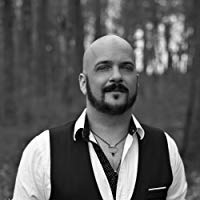
“To Be Silent” is perhaps the most misunderstood tenet of the Witch’s Pyramid (also called the Powers of the Magus / Four Powers of the Sphinx). These Four Pillars were codified and presented first by French Occultist Eliphas Levi in the 1800s in his book Transcendental Magic: Its Doctrine and Ritual, which predates modern witchcraft. “To Be Silent” doesn’t mean that you shouldn’t tell people that you’re a witch or a magician or about any spell that you’ve ever cast after it’s manifested.
“To Be Silent” may be better worded as “To Be Still” and a great way to understand this tenet is actually from a Bible verse “Be still, and know that I am God” (Psalms 46:10). Regardless of your feelings about the Bible, Christian Magick has had a huge influence on Western magickal traditions and theory including that of Modern Witchcraft. The Psalms, in particular, have well been established by magicians as a powerful Grimoire in and of itself, and you need not look any further than European or American folk magicians to see it still being employed effectively in what we as witches might term a “spell.”
So what does that all mean? On one level “To Be Silent” is about being in a meditative receptive state. To achieve this, we need to be internally Silent and Still after our magic has been cast. In my book Psychic Witch, I discuss the levels of reality that a spell moves back and forth through for manifestation and how we can consciously direct that and how to avoid interfering with it. We consciously take control of our thoughts and direct them with clear focus and will while spellcasting. Once the spell has been cast we try to consciously forget it. We don’t obsess, dwell, or doubt it. Doing so brings it back into the mental realm and weakens and delays the process of manifestation. In other words, we get out of our own way. Likewise, we don’t tell others about a spell we’ve cast until it has manifested, because we also don’t want other people’s mental energy affecting its manifestation with their doubts or thoughts on the spell.
At the last step of our manifestation process, we release it completely from our own energy fields out to the Universe to reach the “Divine” level of reality, which is where the real magick occurs to be manifested, regardless of how we interpret or name that “Divine” level of reality. In other words, “Be still, and know that I am God.” We let go of our working and trust that The Divine/God/Goddess/Universe/Collective Unconscious/Whatever will make it so. We can also see this as understanding that we are a part of that divinity as a Microcosm (as discussed in Psychic Witch as well) and what we Will through our divinity will occur. “As I Will it, So Mote It Be.” Be still, and know that you are God.
One theory, which I suspect may have some truth to it, is that the interpretation of “To Be Silent” meaning to be secret about one’s involvement within the Craft may have originated during the times of Gardner (and perhaps before) when there was not only an extremely adverse public opinion to Witchcraft, but there were literally anti-witchcraft laws in place at the time, so secrecy of one’s Craft was an absolute must to ensure the safety of the witches. But whether this origin of its interpretation is true or not, I have no idea. I can only speculate, but it would make sense.
View this post on Instagram
























